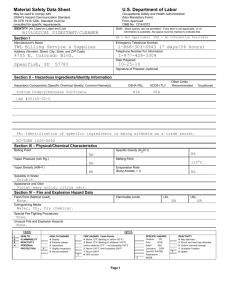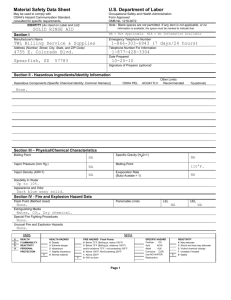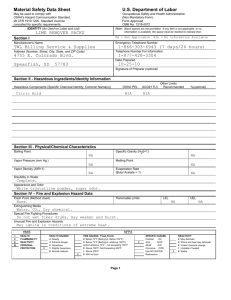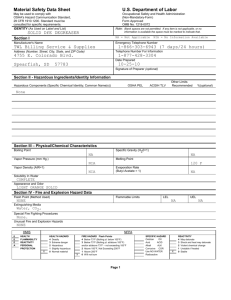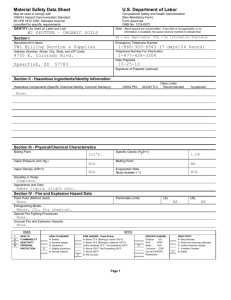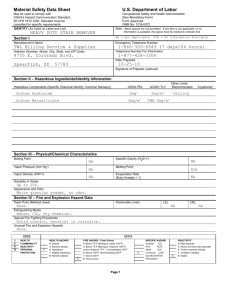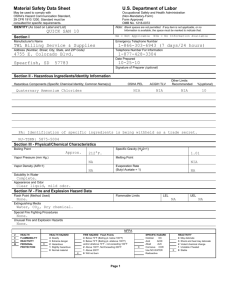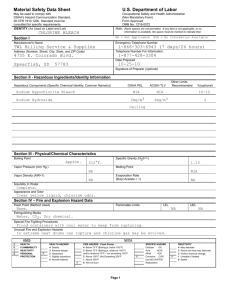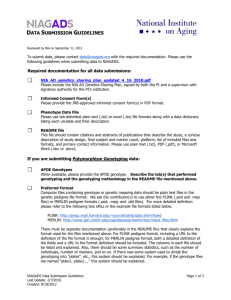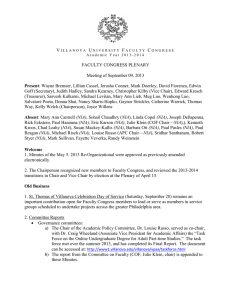Sample-Data-Return
advertisement
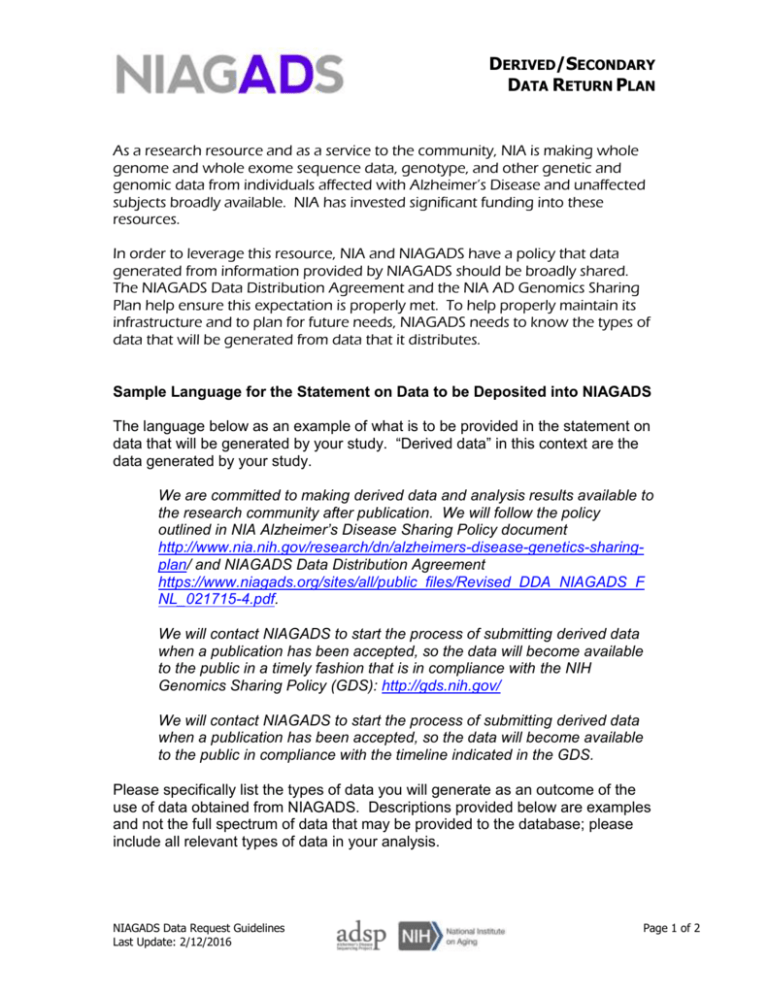
DERIVED/SECONDARY DATA RETURN PLAN As a research resource and as a service to the community, NIA is making whole genome and whole exome sequence data, genotype, and other genetic and genomic data from individuals affected with Alzheimer’s Disease and unaffected subjects broadly available. NIA has invested significant funding into these resources. In order to leverage this resource, NIA and NIAGADS have a policy that data generated from information provided by NIAGADS should be broadly shared. The NIAGADS Data Distribution Agreement and the NIA AD Genomics Sharing Plan help ensure this expectation is properly met. To help properly maintain its infrastructure and to plan for future needs, NIAGADS needs to know the types of data that will be generated from data that it distributes. Sample Language for the Statement on Data to be Deposited into NIAGADS The language below as an example of what is to be provided in the statement on data that will be generated by your study. “Derived data” in this context are the data generated by your study. We are committed to making derived data and analysis results available to the research community after publication. We will follow the policy outlined in NIA Alzheimer’s Disease Sharing Policy document http://www.nia.nih.gov/research/dn/alzheimers-disease-genetics-sharingplan/ and NIAGADS Data Distribution Agreement https://www.niagads.org/sites/all/public_files/Revised_DDA_NIAGADS_F NL_021715-4.pdf. We will contact NIAGADS to start the process of submitting derived data when a publication has been accepted, so the data will become available to the public in a timely fashion that is in compliance with the NIH Genomics Sharing Policy (GDS): http://gds.nih.gov/ We will contact NIAGADS to start the process of submitting derived data when a publication has been accepted, so the data will become available to the public in compliance with the timeline indicated in the GDS. Please specifically list the types of data you will generate as an outcome of the use of data obtained from NIAGADS. Descriptions provided below are examples and not the full spectrum of data that may be provided to the database; please include all relevant types of data in your analysis. NIAGADS Data Request Guidelines Last Update: 2/12/2016 Page 1 of 2 DERIVED/SECONDARY DATA RETURN PLAN We will submit to NIAGADS: 1. Case/control or endophenotype association studies: genome-wide association significance, allele frequency, and summary statistics 2. Family studies: genome-wide linkage/IBD/co-segregation significance and summary statistics 3. Structural variant analysis: called SVs in VCF or other commonly used file format, including genotypes if available. When SVs are used for association/linkage studies, we will provide genome-wide summary statistics outlined in items 1 and 2. 4. Bioinformatic annotations of variants that are used in published analysis 5. Pathway analysis: significance and summary statistics of all pathways/gene annotation terms tested 6. Individual level phenotypes/endophenotypes/gene expression levels/covariates not provided by ADSP and are required to replicate published findings 7. Published population structure estimates, genome-wide genotype imputations, and phased haplotypes. 8. If sequencing data are processed using a different workflow to generate SNP and indel variant calls and used in publications, we will provide all called variants in VCF format. NIAGADS Data Request Guidelines Last Update: 2/12/2016 Page 2 of 2


